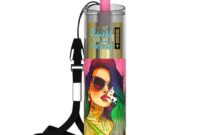Overview of Online Shopping Trends in 2026: Top 2026 Shop Solv Online
The landscape of online shopping is evolving at an unprecedented pace, with emerging trends that are reshaping how consumers interact with e-commerce platforms. In 2026, a blend of technology, consumer preferences, and innovative shopping experiences is defining the new normal. E-commerce is no longer just about convenience; it’s about creating a personalized journey that meets the diverse needs of today’s shoppers.
One of the key trends shaping online shopping in 2026 is the integration of artificial intelligence and machine learning, which enhances personalized shopping experiences. Consumers are increasingly influenced by seamless user interfaces and tailored recommendations. According to recent statistics, e-commerce platforms have seen a growth rate of approximately 25% over the past two years, indicating a robust shift towards online retail.
Key Features of Top Online Shopping Platforms
When it comes to online shopping, consumers prioritize a set of essential features that enhance their overall experience. The following table Artikels some of the key attributes that shoppers look for across popular platforms:
| Feature | Description | Importance |
|---|---|---|
| Intuitive Navigation | Easy-to-use interface that allows for quick product discovery. | Enhances user engagement and satisfaction. |
| Personalized Recommendations | AI-driven suggestions based on browsing and purchasing history. | Improves conversion rates by presenting relevant products. |
| Secure Payment Processing | Multiple payment options with high-level encryption. | Builds consumer trust and reduces cart abandonment. |
| Customer Reviews and Ratings | Access to feedback from other buyers. | Aids in informed purchasing decisions. |
| Responsive Customer Support | Availability of help via chat, email, or phone. | Enhances customer satisfaction and loyalty. |
User experience is paramount in online shopping, as it can significantly influence customer retention and brand loyalty. A seamless and enjoyable experience encourages repeat purchases and fosters a positive relationship between consumers and retailers.
Evaluating Product Availability and Variety
Product variety plays a crucial role in attracting and retaining online shoppers. A diverse selection of products not only meets the varied tastes of consumers but also enhances the likelihood of a purchase. Recent trends show that categories such as electronics, fashion, and home goods are among the most frequently purchased items online.
Niche markets are also thriving in 2026, as consumers seek unique products that resonate with their interests. For instance, sustainable products and handmade goods have gained traction, appealing to eco-conscious shoppers looking for alternatives to mass-produced items.
Payment Options and Security Measures
The evolution of payment methods in online shopping has significantly transformed the consumer experience. In 2026, shoppers expect a variety of secure payment options, including digital wallets, cryptocurrencies, and traditional credit/debit cards.
A comprehensive list of secure payment options includes:
- Credit/Debit Cards
- Digital Wallets (e.g., PayPal, Apple Pay)
- Cryptocurrency Payments (e.g., Bitcoin, Ethereum)
- Buy Now, Pay Later Services
- Bank Transfers
Cybersecurity remains a critical concern for online transactions, as breaches can lead to significant financial and reputational damage. Retailers are investing in advanced security measures, such as two-factor authentication and end-to-end encryption, to protect consumer data.
Customer Service Innovations in E-commerce
In 2026, customer service technologies have advanced significantly. Innovations such as chatbots and AI-driven support systems provide immediate assistance to consumers, enhancing their shopping experience.
Best practices for improving online customer support include:
- Implementing round-the-clock support availability
- Utilizing AI to predict and address common issues
- Offering multiple channels for customer inquiries
- Training staff on empathy and problem-solving skills
Challenges in customer service for e-commerce platforms often include:
- High volume of inquiries during peak times
- Difficulty in personalizing automated responses
- Managing customer expectations effectively
- Navigating language barriers for international customers
The Role of Social Media in Online Shopping

Social media has emerged as a powerful influencer in purchasing decisions. Shoppers increasingly rely on platforms like Instagram and TikTok for product discovery and brand engagement.
Successful social media marketing strategies often include:
- Influencer partnerships that resonate with target audiences
- Interactive content, such as polls and live demos
- Utilizing targeted ads to reach specific demographics
- Creating engaging user-generated content campaigns
The integration of shopping features within social media platforms, such as shoppable posts and dynamic ads, has streamlined the purchasing process, allowing consumers to buy directly from their favorite platforms.
Shipping and Delivery Innovations, Top 2026 shop solv online
Advancements in shipping and delivery logistics are redefining consumer expectations in e-commerce. In 2026, retailers are exploring solutions such as same-day delivery and autonomous vehicles to enhance service efficiency.
The following table compares various delivery options and their impact on customer satisfaction:
| Delivery Option | Average Delivery Time | Impact on Satisfaction |
|---|---|---|
| Standard Shipping | 3-5 days | Moderate |
| Express Shipping | 1-2 days | High |
| Same-Day Delivery | Within hours | Very High |
| Drone Delivery | Less than an hour | Extremely High |
Drones and automation are poised to revolutionize delivery services, offering faster and more cost-effective solutions for retailers and consumers alike.
Sustainable Practices in Online Retail
Sustainability has become a significant factor in consumer purchasing decisions. In 2026, many online retailers are adopting eco-friendly practices to appeal to environmentally conscious shoppers.
Notable eco-friendly practices include:
- Using sustainable packaging materials
- Implementing carbon offset programs
- Offering eco-friendly product lines
- Encouraging recycling through return programs
Brands like Patagonia and Allbirds are leading the way in sustainable online shopping, demonstrating that ethical practices can coexist with profitability.
The Future of Augmented Reality in Online Shopping
Augmented reality (AR) is transforming how consumers visualize products before making a purchase. In 2026, AR applications are enhancing the shopping experience by allowing customers to try on clothing virtually or visualize furniture in their homes.
Successful implementations of AR by online retailers include:
- Virtual fitting rooms for apparel brands
- Home decor visualization tools for furniture retailers
- Interactive product demonstrations for tech gadgets
These innovations are bridging the gap between online and in-store shopping experiences, helping consumers make informed choices.
Preparing for Changes in Consumer Preferences
As consumer preferences evolve, retailers must remain agile to adapt to shifting behaviors. The growing interest in personalized shopping experiences, sustainability, and convenience is shaping future trends.
Retailers can prepare for changes in consumer preferences by:
- Investing in data analytics to understand buying patterns
- Offering customization options for products
- Creating loyalty programs that reward sustainable purchases
- Staying abreast of technological advancements
Potential future trends in online shopping preferences may include:
- Increased demand for ethical sourcing
- Greater emphasis on community-driven brands
- Expanded use of voice commerce
- Integration of virtual reality shopping experiences


